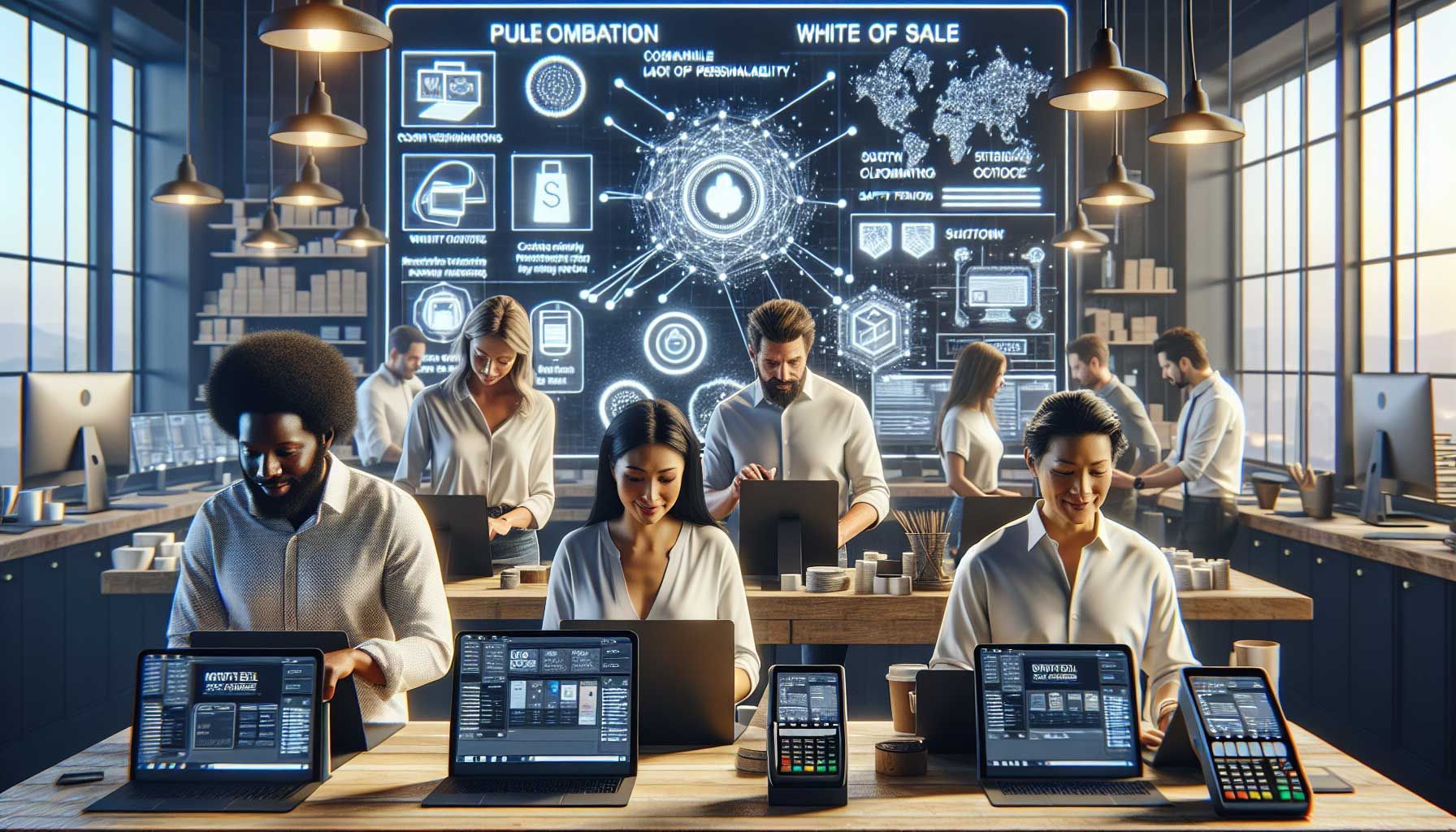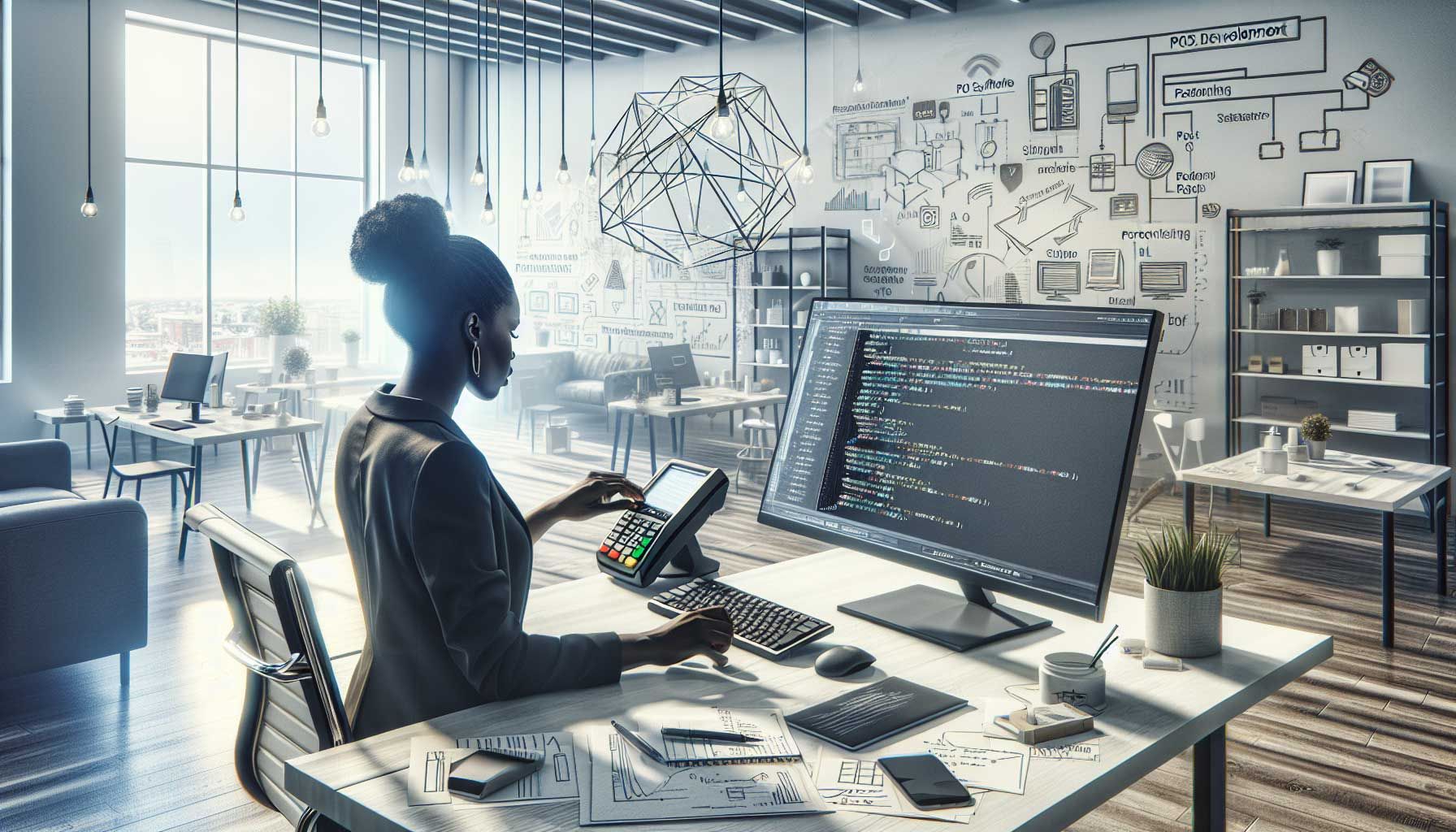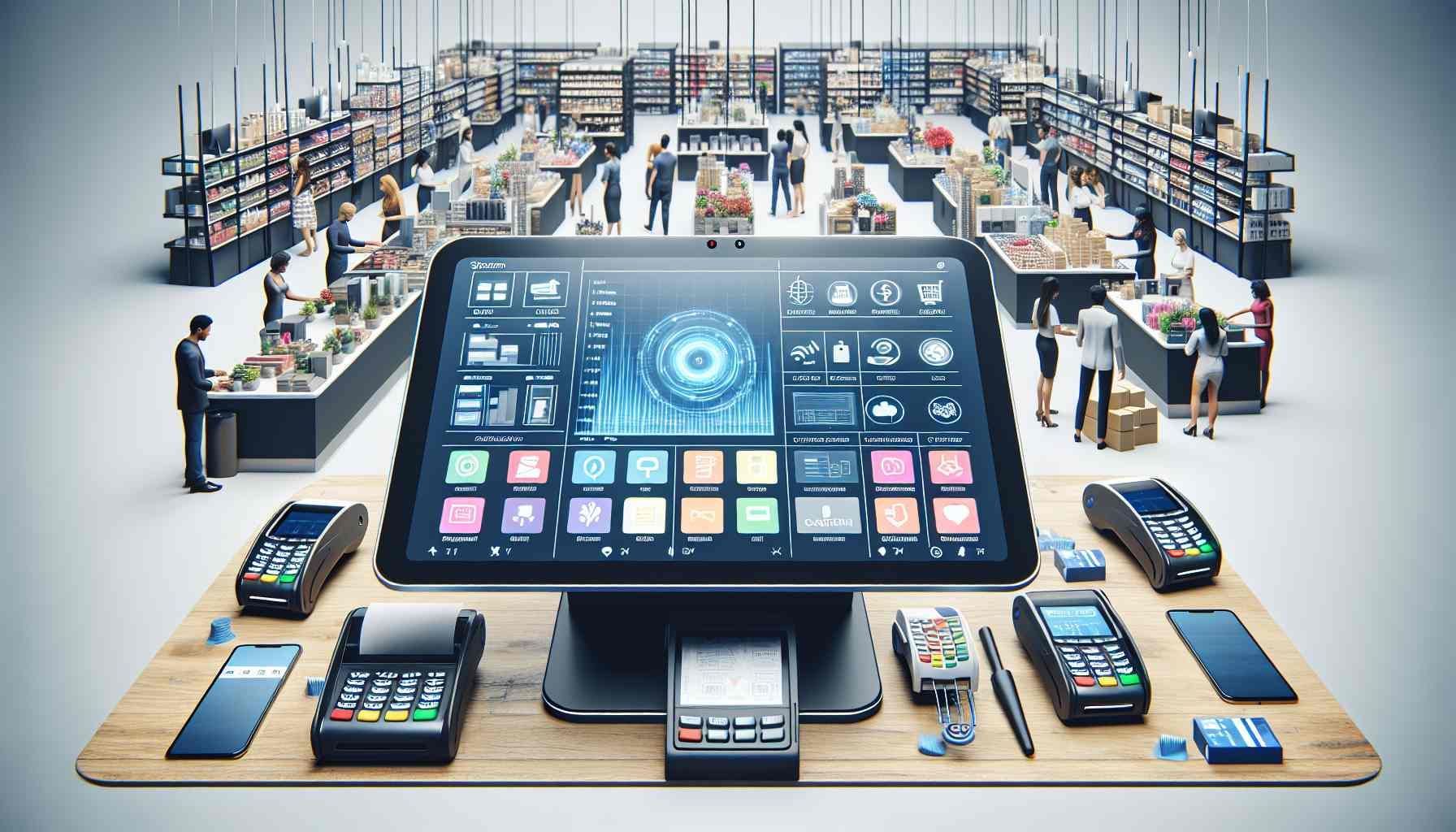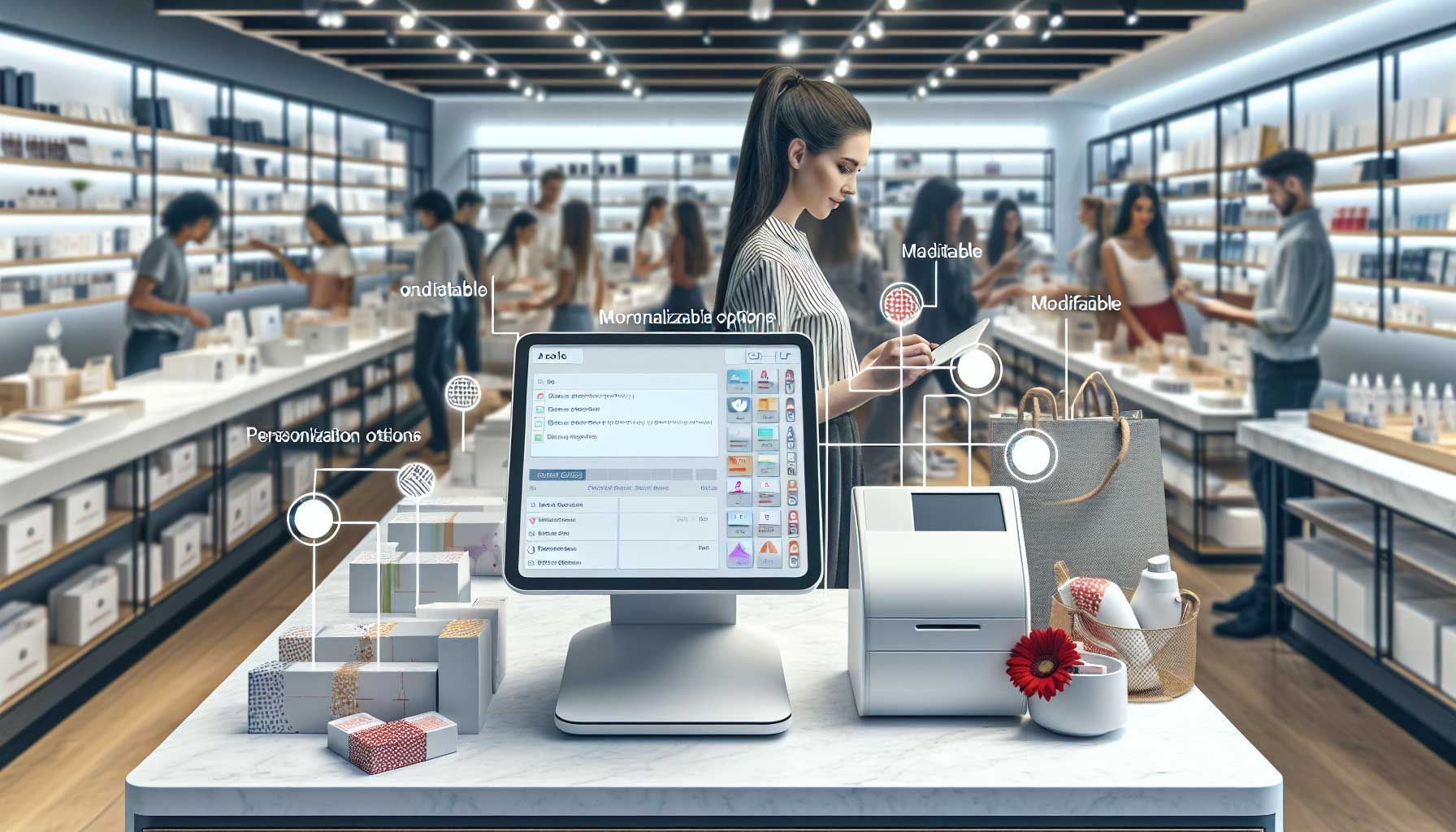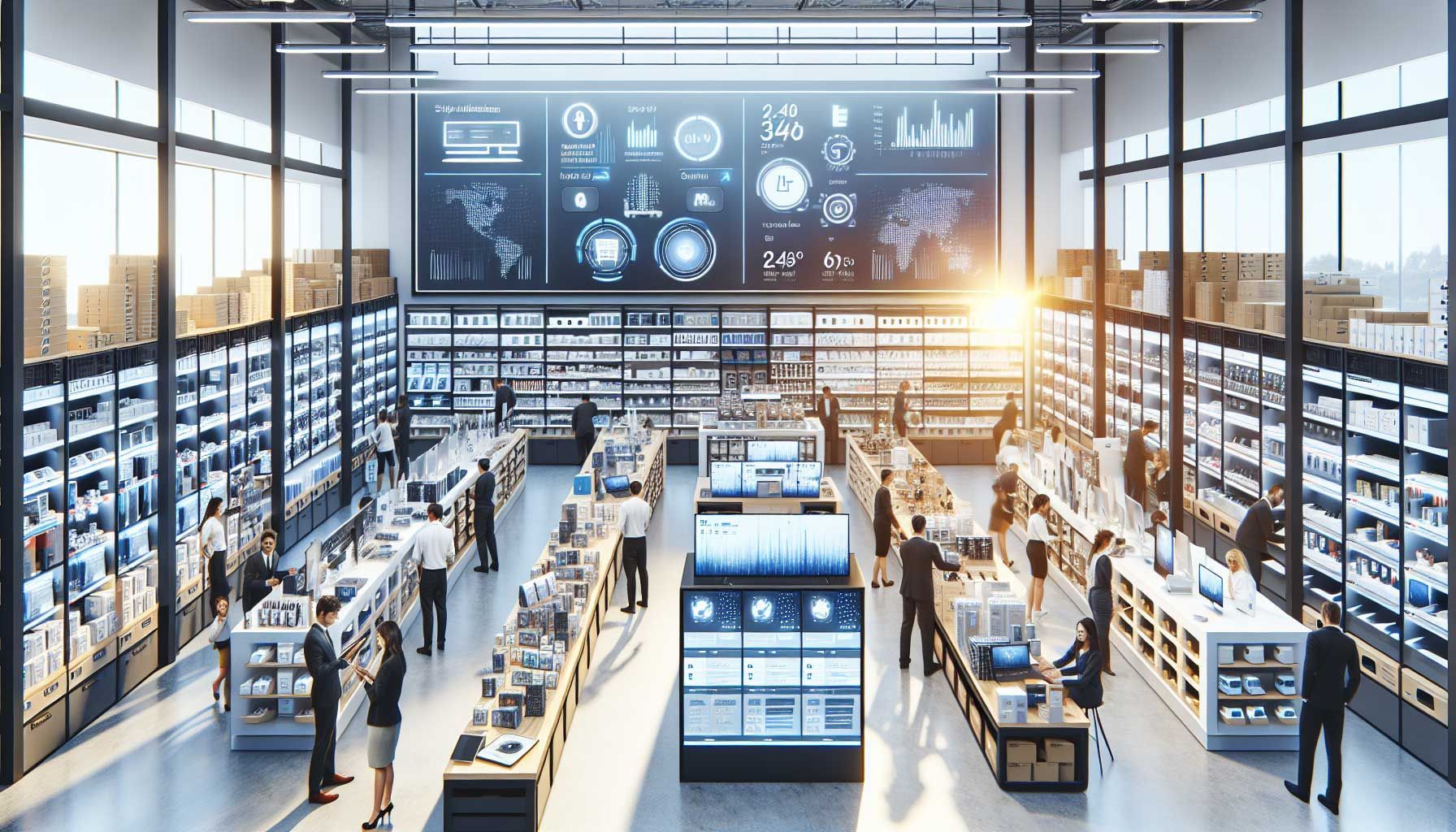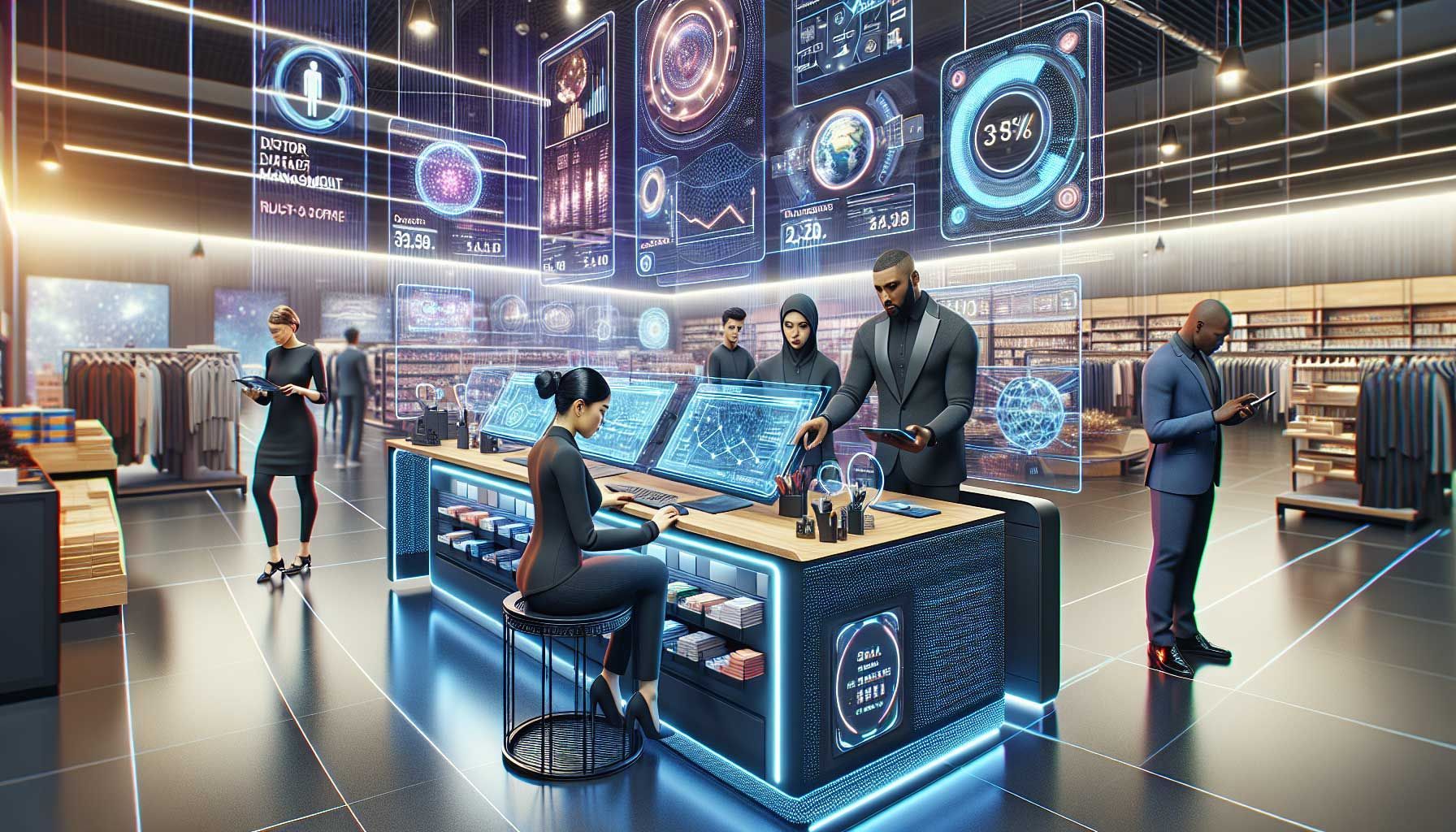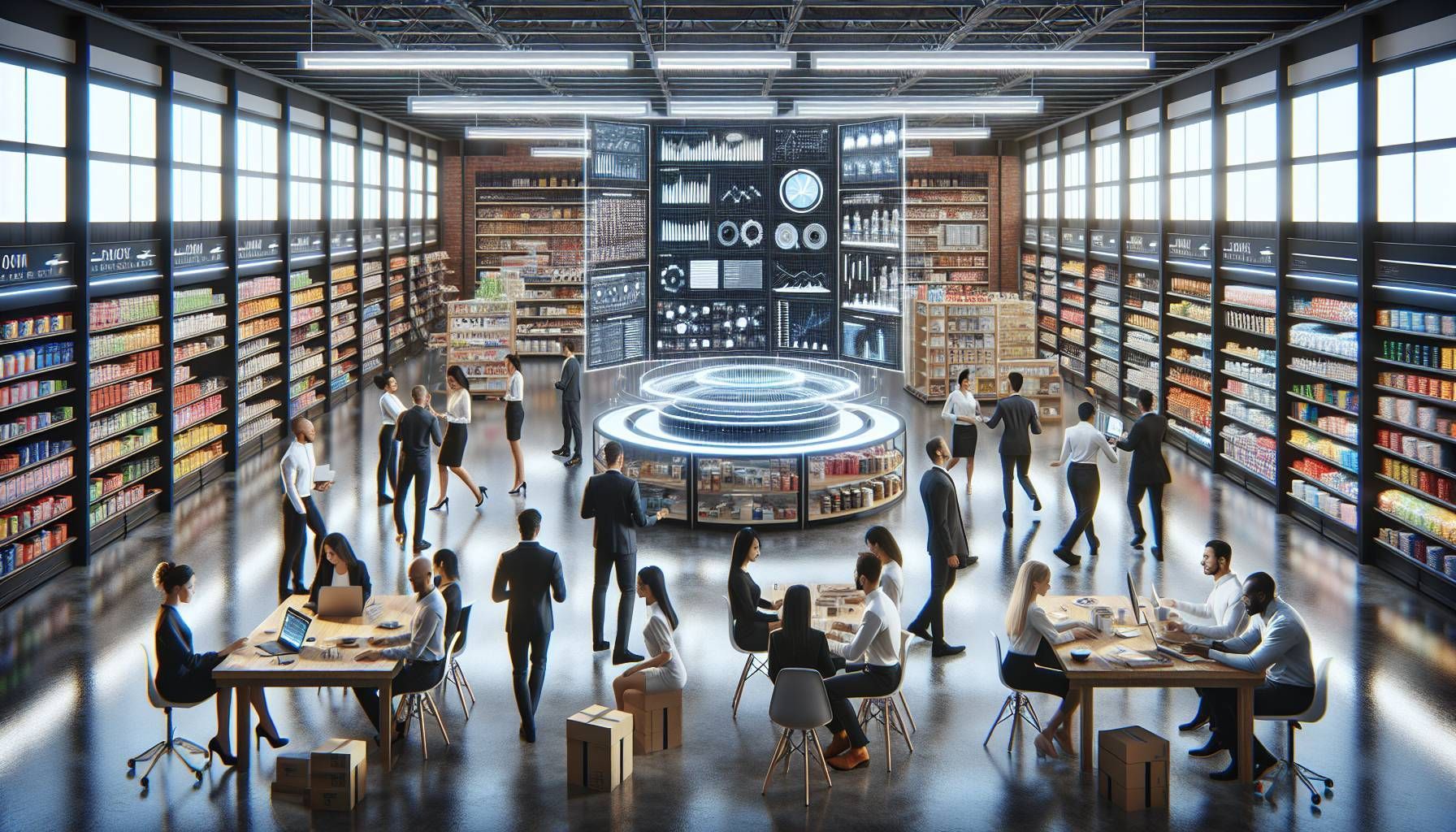How to Automate your Retail Industry and Strengthen Integration
Consumer behavior has changed due to a digital transformation of the retail industry. Just think about how a consumer currently orients himself and makes his purchases. In this article we discover how automation and industry integration is fundamental to the success of the entire chain. As a retailer, it is no longer just about the automation of your own company, but also integration with suppliers is a determining factor. Only in this way the retailer can reduce costs and increase customer satisfaction. Below we provide a complete step-by-step plan on how you can digitally integrate your industry. I hope this enables brick and mortar stores to find ways to get ahead of the competition and stay on top.
Retail industry integration with suppliers and automation of product sales channels
The retail industry is constantly evolving and adapting to the needs of consumers. With the integration of suppliers and automation of product sales channels, retailers are able to increase their customer base, drive revenue, and minimize costs. In this article I do not want to delve deeply into the benefits, but rather shed light on how you achieve digital integration in your retail industry in a practical way. Below is a simple chart of the complete integration process.
The current integration of the retail industry
The image below shows the current way of integration. Usually a supplier has its own ERP system. In many cases they use different systems for storing product information, creating orders and keeping track of inventory. This makes integration a challenge.
In addition, each retailer uses its own cash register system. As a result, every form of automation requires customization per retailer. Furthermore, various suppliers can already send their orders digitally (for example as a txt file), so that the products are directly in the cash register system. However, usually the photos and general product information to show the products on the webshop are still missing. The retailer usually has to add this manually to his webshop. Last but not least, sometimes retailers have a link to update their stock on the webshop once a day.
It looks something like this:
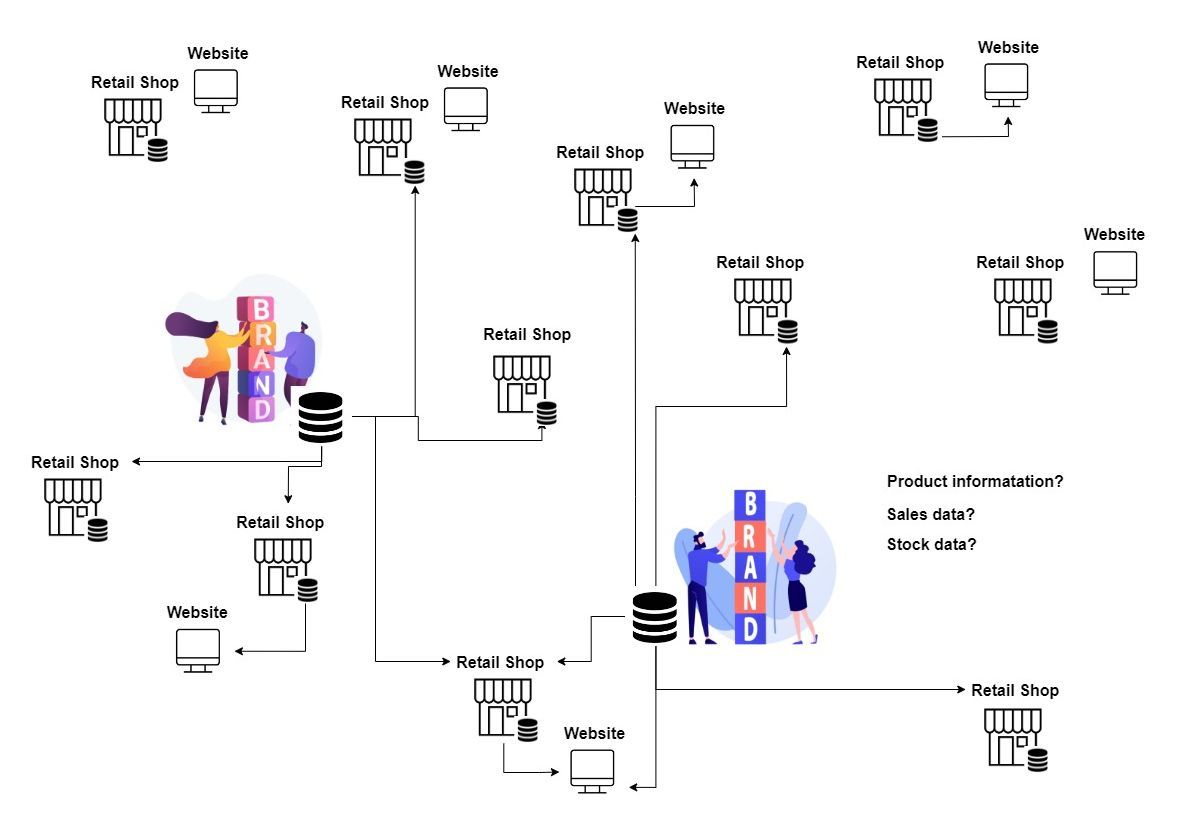
So how do you solve this without high costs and a lot of customization?
Let everyone work in one system with a shared product database. We illustrate this in the photo below. In recent years we have applied this system to the Dutch jewelery industry. Nowadays our architecture is easy to host on your own server and resell it white label. Let's see how it works below.
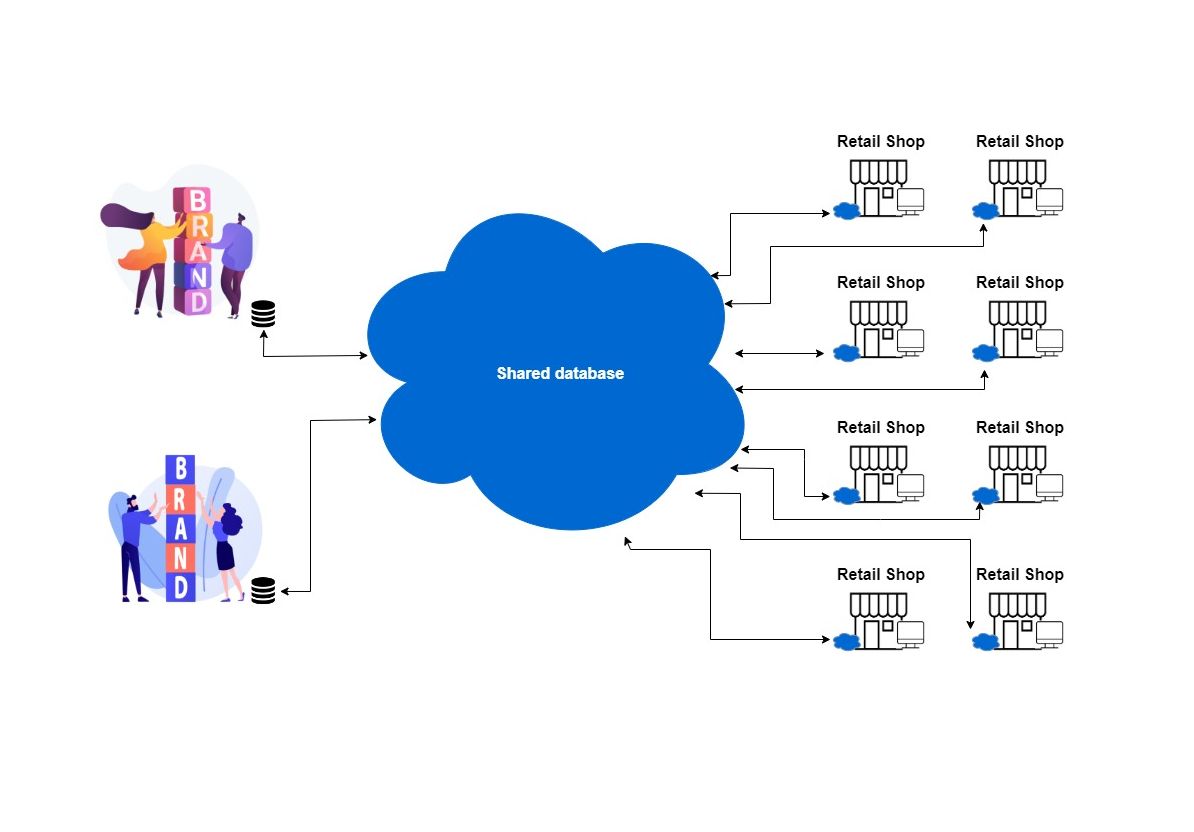
But first, which processes are important for retail integration?
There are some essential processes that you would like to automate to achieve deep integration of the retail industry. First of all, you want to make product information and stock from suppliers available in the retailer's system. In addition, orders must be able to be sent back and forth. Finally, you also want to make the retailer's sales and stock transparent for the supplier. So this is about forward and backward integration. Both parties send and receive realtime information.
A modern architecture for retail collaboration
Therefore, a solid infrastructure that covers these processes is the basis for good cooperation. Nevertheless, each business has its own needs. That is why I first want to show the requirements and possibilities per component. Because, for good retail industry integration, it is essential that all parties want to participate and that every party is on the same page. We make the following subdivision:
- Supplier system
- Central part
- Retailer system
- Sales channels
Supplier side of the integration
First, let's look at the general challenge and solution for suppliers. You have different types of chains. In some industries, a few suppliers have more control at retailers than in other markets. If this is the case in your industry, the cooperation of these parties is extra important.
Do they not want to cooperate immediately? Then the roll-out of the system mainly starts on the side of the retailer. Only when enough retailers are connected, it becomes important enough for suppliers to participate. Of course you will miss general product information of brands in the database (see the next chapter), but you can also import this through retailers. This is how we did it ourselves before more than 100 retailers used the system. Ultimately, many suppliers don't want to share their product information right away, if they don't get anything in return.
A supplier finds it interesting to see the current stock and sales figures from his retailer. This is essential to achieve a smooth supply chain. That is why the retailer can provide insight into this with one click. In this way, the remote representative can better think along with his dealers. Orders are created with the B2B Sales App. These can also be created in another system and then shared by API with the central system.
Supplier should share with retailers:
- General product information (photo, details, purchase and sales recommended prices)
- Stock level of supplier
- Sales orders
- Recommended stock per store
- Marketing content
Central part of the retail industry automation
It becomes clear that you need a central system to link the supplier to the retailer. At Retailgear, we also call this the shared product database. It is like a PIM system, but then for the entire industry. This contains all product information from suppliers. In fact, this contains all products that the users have created. The unique thing is that every retailer works directly in this database. It also registers the sales and stock per product per store. This makes data sharing with suppliers easier.
The central part contains all the information that both suppliers and retailers want to share with each other and what they want to receive. Don't worry, in the end everyone can have their own prices and descriptions. This is not shared with other retailers, but only with the supplier if you give him permission. The great thing is that this shared product database works entirely in the cloud. The system is therefore accessible everywhere and makes it easy to link via API. Moreover, with the white label solution it is possible to adapt more than 80% of the software.
This central database is therefore the basis for more intensive cooperation and automation of the retail industry. A completely different way of working, while the product page doesn't look much different.
Retailer side of collaborative working
Integrating the retail industry is of course about optimizing the processes of retailers, so that they work more efficiently and offer the consumer a better experience. In essence, it is of course about automating digital contact with consumers. The retailer must be able to offer the consumer a personalized experience, both online and offline. Regardless of how he comes into contact with your company. Whether the consumer comes to the store, visits the webshop, view your products on Social Media or rather contact you by phone and WhatsApp. For this it is important to no longer see each sales channel separately, but that all channels are merged. You can learn more about this at our article on building an
Unified Commerce Ecosystem.
More than a cash register
Only by seamlessly connecting all your products, sales channels, customer interactions and payments in one platform can you offer consumers the very best experience. That is why the retailer must now expect much more from their
POS system than just checkout.
For example, it must be fully integrated with the retail webshop. You also want to have all customer interactions and transactions in one overview. Whether it concerns a purchase in the store, webshop or on another marketplace.
Suppliers can support the physical store in this. For example, to save time booking products and boosting sales by promoting the brands online. The supplier does need information from the retailer for this. That is why it is important that there is a real-time flow of information.
Retailer should share with suppliers:
- Realtime stock at store
- Realtime sales at store
- Purchase orders
- Repairs or services
- Dropshipping orders
Sales channels
In addition to the physical store, there are now other sales channels. For example, think of a webshop or a marketplace, such as Amazon. These platforms are also increasingly available for
wholesale. In addition, more and more is being sold via Social Media and of course Google Shopping. This is an important part of retail industry integration.
Because consumers are increasingly moving on these types of channels than they want to visit the physical store directly. For the best automation, it is therefore important that all these channels are also integrated into the value chain process.
With a robust API, the retailer's stock and product information can be synchronized with other channels. Orders, stock changes and customer data must then be sent back to the POS system. It is therefore important that the system can provide these links.
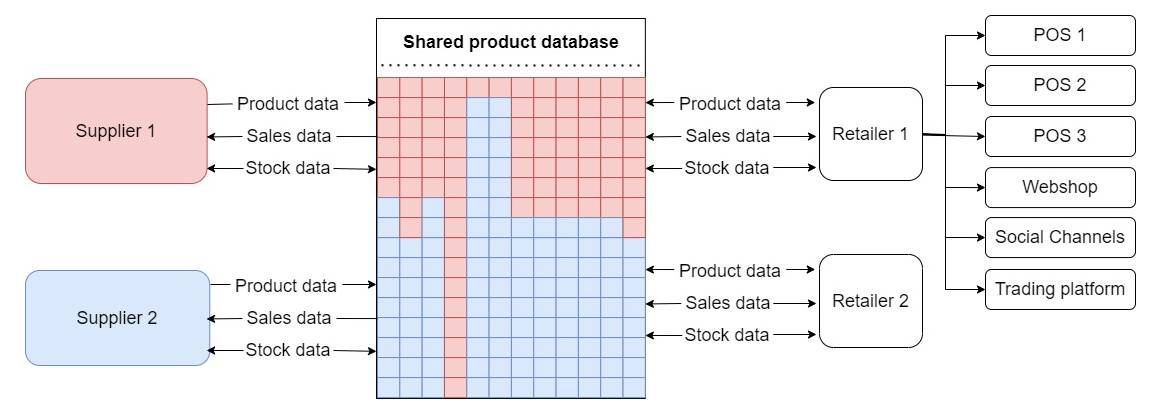
Most important details that have to be right
As a summary, we would like to briefly indicate which aspects are essential for the integration of the retail sector. Ultimately, it is about creating transparency and enabling collaboration. That is why we can mention some important aspects as a foundation for good automation:
- Up-to-date product information
- Realtime stock and sales data
- Forward AND backward integration
- Digital transformation
Up-to-date product information
The product information must be updated in real time and it must be easy to send from supplier to retailer. That is why all parties work with Retailgear in the same product database. The supplier shoots the information in before the products reach the store. The retailer can then easily book these products in by uploading the invoice. The system matches the product numbers of the packing slip with general product information from the database. This information can then be easily adjusted.
Realtime stock and sales data
By sharing real-time sales and stock data, an optimal assortment can be maintained. Bestsellers can be replenished faster and slow sellers can be replaced. Time and costs are also saved in the sector. For example, think of a representative who can use his time more efficiently. He will not visit a specific retailer anymore, that still have sufficient stock.
The uniqueness of Retailgear is that all data from the industry comes in one system. This makes it possible as an independent retailer to focus on the use of big data. For example, the system can recommend which products might be of interest to its customers. This way you not only
optimize the stock, but marketing can also be done more effectively.
Forward AND backward integration
It is important for the retail automation industry that the integration works both ways. So that information goes from the retailer to the supplier and vice versa. Only then is cooperation possible. It sounds like something that makes sense, but experience shows that many systems are not set up in this way.
Digital transformation
The focus should be on a digital transformation of the sector. Consumer behavior has changed and systems must therefore be designed accordingly. Think, for example, of digital contact with customers via e-mail and WhatsApp. It is also about digitization in the store. With a kiosk solution, for example, products can be displayed on a screen that are not yet in stock in the store, but are available at the supplier.
In addition, it is also important that each store has its own online environment. Not just a webshop that shows online which products are in stock, but a complete catalog with inspiration and advice. By building standard solutions for this, an independent retailer saves a lot of costs and customization. Ultimately, it is also essential that this works integrated with the POS system.
The foundation of AI automation for Retail Integration
The retail industry is undergoing a major transformation. With the help of AI automation, it is possible to integrate processes seamlessly and in real-time. Some companies are already using AI automation for their retail integration process. This has made the process more efficient and cost-effective. For this it is important that the retailer has access to a lot of industry data. They can then match this with their own stock and sales data. In this way, every retailer can get unique recommendations and bet on AI automation.
That is why we are also convinced that the shared product database is essential for a future-proof store. Because, artificial intelligence can also realize personal customer contact via digital channels. For example: a customer has bought a gold ring at his local store. This same ring has also been sold at 9 other companies. A gold bracelet is sold together with this at 3 of these stores. The system can then also make this recommendation to the other 7 people.
Conclusion: build this digital highway yourself
As you understand, there is only room for one system per industry per region. If you want to get started with retail integration and automation, it is important that you build the architecture. With Retailgear it is possible to integrate this solution with your existing systems. It works completely under your own brand and possibly on its own server. In addition, you can edit more than 80% of the code. This saves a lot of time and costs when integrating the retail industry. Learn more about the system now or contact us optional.

Bring your shop to the next level
Hi, I'm George and I like retail and technology. Therefore, my passion here at Retailgear.com is to provide you with reliable information to automate and digitize your store. You can find out what we can do for your industry through our menu. Also, feel free to check out this updated list of retail tools.
Get inspiration in your inbox to get more sales and store visitors with less effort.
Contact Us
Share this post:
More about your favorite subject
Discover latest posts

